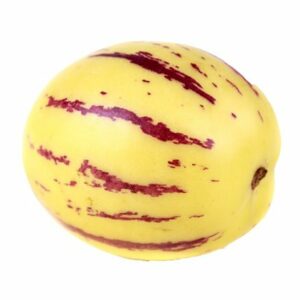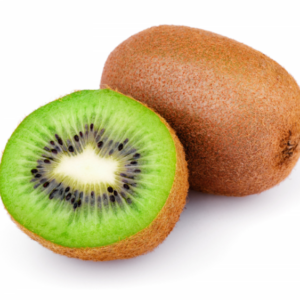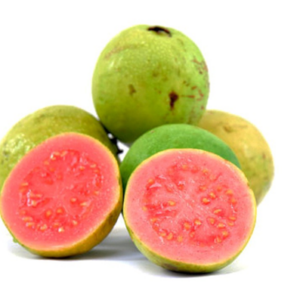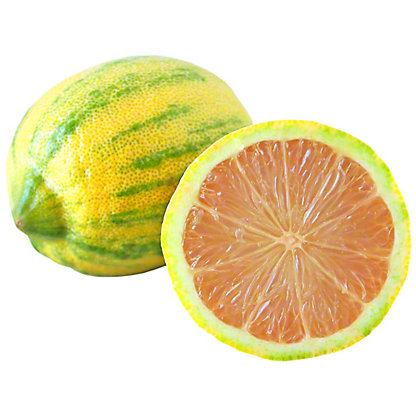Description
Papaya is an herbaceous plant which belongs to the family Caricaceae and was originated in Central America and also cultivated in tropical areas of the world for its sweet and large melon like fruits. The term papaya also specifies the fruit of other Carica species such as C. stipulate and C. pubescens and their various hybrids. Papaya is also known as Mamon, Melon-tree, Paw paw, Pawpaw, Tree melon, Mummy Apple, Mamão and Melon Tree.
The plant has hollow and green or purple stem which grows up to the height of 1.8-3 m in a year and could reach to the height of 6-9 meters. Leaves have long petioles which measures about 30-105 cm long and 30-60 cm wide and is divided deeply into 5 to 9 main segments and are lobed further. The stems and leaves produce large amounts of white and milky latex when injured. The plant is adaptale to various soil types such as rocky volcanic soils, calcareous soils, peat soils and acid sulphate soils but prefers well-drained, friable, moist, light soil, organic matter rich, loams and sandy loams.
India is regarded as the highest producer of papayas which produces 42% of the world’s crop. Brazil, Indonesia, Nigeria and Mexico are the other major producers. Papaya was naturalized in Cuba, Bahamas, Grenada, the Dominican Republic, Haiti, Guadeloupe, Martinique, Jamaica, Saint Vincent and the Grenadines, Puerto Rico, Trinidad, the U.S. state of Florida, the U.S. Virgin Islands, Tanzania and Malawi.
Papaya is loaded with nutrients and could be found throughout the year. It is rich in antioxidants Vitamin A, Vitamin C and Vitamin E, potassium, magnesium and minerals, fiber, folate and panthotenic acid. Moreover, it possesses digestive enzyme papaintha which is used for treating allergies, trauma and sports injuries. The nutrients found in Papaya helps to promote cardiovascular system, protect heart from strokes, heart attacks and also prevent colon cancer.
Papaya Plant
This dioecious plant produces short-stalked female flowers having waxy, white five petals that are borne in separate plants. The shape of the fruit varies in the flower type. Fruits which are developed from female flowers have oval to round shape whereas the fruits developed from perfect flowers are cylindrical or club shaped and measures about 50 cm long and 20 cm wide. Fruit weighs upto 9 kg. Unripen fruits have latex which abandon as the fruit ripens to color light or dark yellow. Fruit has yellow to orange to red flesh which is juicy and thick with a central core containing many small black seeds.
Papaya Flower
Plants bear fragrant flowers of white or cream coloured. Male flowers form on long peduncled, pendulous racemes and measures about 30 to 100 cm long. Flowers are borne in clusters and consist of five lobed calyx as well as creamy yellow corolla tube. In female plant, flowers (female) are solitary, axillary on short stalks which consists of small, five twisted, five lobed calyx, obtuse petals, pale yellow lanceolate, large ovary which bears five dilated and subsessile stigmas. An ovary is one celled, globular which consists of numerous ovules that are attached to five parietal placentae.
Papaya Fruit
Flowers then convert into ovoid to obovate fruit which measures about 50 cm (20 inches) long and 20 cm (8 inches) wide. Fruit have yellow or orange skin with yellow or orange flesh. Inner core contains black and wrinkled seeds. Seeds are oval in shape measuring 2 mm in diameter which is enclosed in mucilaginous membrane.
History of Pawpaw
Papaya is native to tropical America, Central America and Southern Mexico. Seeds were brought to Panama and then Dominican Republic before 1525. The cultivation spread to warm altitudes in South and Central America, Bahamas, West Indies and Southern Mexico and to Bermuda in 1616. It reached to Philippines in 1550 and then reached to Malacca and India. In 1626, seeds were sent to Naples from India. Papaya is well known to all tropical regions of Old World and Pacific Islands and has got naturalized in many areas.
Till 1959, papaya was cultivated in Southern and Central Florida. Today it is commercially produced in Hawaii, the Philippines, tropical Africa, Ceylon, India, Australia and Malaya but produced in smaller scale in Latin America and South America. Papaya has become the leading fruits of Southern Mexciso and 40% of the crop in this country is produced in Veracruz on 14800 acres which yields 120000 tons annually.
Fruits produced from bisexual plants have cylindrical or pyriform having small seed cavity and thick wall of firm flesh. Fruits produced from female flowers are round to oval and thin walled. Bisexual types in some areas are highly demanded. South Africa prefers round or oval papayas.

Health Benefits of Papaya
Papayas are grown in tropical climates and also called pawpaws and papaws. Apart from their sweet taste and vibrant color, it is loaded with enormous health benefits. This exotic and rare fruit could be found all times of the year. One serving of papaya provides 144% of daily recommended value of Vitamin C that helps to counteract infection and free radicals. Vitamins such as pyridoxine, folic acid, thiamin and riboflavin found in papaya are essential for the body.
Papaya helps to lower the chances of diabetes, heart disease, promote blood glucose control in diabetic patients, aids digestion, improve healing of wounds and lowers blood pressure. This soft and fleshy fruit could be used in various ways for culinary purposes. It is an aid for health ailments such as heart disease, atherosclerosis and rheumatoid arthritis. It also possesses flavonoid beta carotene which protects mouth and lung cancers. It also contains other flavonoids such as zeaxanthin, lutein and cruptoxanthins that provide antioxidant properties which counteract free radicals that are the cause for degenerative diseases and premature aging.
- Prevent cancer
The decoction made from papaya leaves are widely used for healing properties against cancer. The study was conducted on human squamous cell carcinoma cells pursued by metabolomics profiling of decoction of papaya leaves for determining effects. Still further studies need to be conducted to examine its activity on cancer cell lines and to confirm integrity of compounds that contributes to its selective effect. Beta carotene and Vitamin C found in papaya lowers the chances of cancer especially colon cancer. Fiber lowers the cancer causing toxins in digestive system. High antioxidant properties and anti-parasitic properties make it a detox or cleanse which enhance immunity.
- Nephroprotective activity
Oxidative stress plays a vital role in developing drug induced nephrotoxicity. The study was conducted for determining nephroprotective and ameliorative effects of seed extract of papaya in paracetamol convinced nephrotoxicity in rats. There is reduction in biochemical parameters and also improve kidney. The plant supported in renal disorders. Unripe fruits have nephroprotective activities which acts as antioxidant activity against oxidative free radicals that are contributed by combined effect of active principles found in it.
- Treat diabetes
The study was conducted to determine hypoglycemic effect of aqueous extract of leaves of papaya in diabetic rats. Several studies show that papaya plant possesses hypoglycemic effects in both humans and animals. The aqueous extract of C. papaya promotes metabolic disruption formed by diabetes. Further research is required to know better understanding of potential therapeutic response, the involved phytochemical constituents and exact mechanism of activity.
- Digestive health
Papaya has chymonpapain and papain which helps to support digestion, cleanse colon and prevent constipation. It helps to heal and prevent stomach ulcers. Leaves have high content of amylase and protease which break down proteins, minerals and carbs that supports digestion. An anti-inflammatory property helps to lower inflammation of colon and stomach. The juice is helpful to cure peptic ulcers by eliminating bacteria H. Pylori due to its antimicrobial properties.
- Menstrual problems
Women with lower abdominal pain and menstrual cramps might ease pain and menstrual flow with leaf juice of papaya. Consume the juice to soothe PMS symptoms. Their healing property balance hormones and also regulates menstruation cycles. Prepare the concoction by boiling a glass of water adding one papaya leaf, a pinch of salt and tamarind. This concoction might be helpful in easing menstrual pain.
- Skin health
Leaf juice of papaya has high content of Vitamin A and C which promotes skin health and provides healthy and radiant skin. The juice restrains the activities of free radicals. Karpain compounds inspect the growth of excess micro-organisms, cleanse toxins from skin and prevent skin problems such as freckles, pimples and acne.
- Supports vision
Papayas have high content of Vitamin A, flavonoids such as zeaxanthin, beta-carotene, lutein and cryptoxanthin which assist mucus membranes in eyes and prevents from being damage. Vitamin A prevents macular degeneration which is an age related loss of vision. Papaya has carotenoids similar to carrots and tomatoes.
- Treat arthritis
Arthritis is a incapacitate disease which lowers the quality of life considerably. The consumption of papayas are helpful to maintain bone health due to the presence of anti-inflammatory properties and Vitamin C that assist to prevent formation of arthritis. The study shows that people who intake foods which are low in Vitamin C have three time more chances to suffer from arthritis.
- Prevent cardiovascular ailments
Vitamin C helps to lower the chances of heart attacks that help to prevent arteries from damage. It lowers the damage caused by free radicals as well as oxidation of cholesterol by lowering the chances of cholesterol forming plaques on artery walls. The diets having low content of Vitamin C have greater chances of development of stroke or heart attack. Folate converts substance associated to heart attacks named homocysteine into benign amino acids lowering chances of cardiovascular problems.
- Anti-viral activity
Leaves of papaya are used for treating dengue fever which is a harmful viral infection from mosquitos in tropical areas. One study shows that when the mixture of leaves with water was consumed by the patients twice in a day have significant lower in viral activity after five days. In Tahiti and Hawaii, poultice made from papaya skin is used to heal wounds because the skin has high content of papain. The application of poultice to the skin helps to cure rashes, burns and bug bites. Papain is used for treating viral and fungal infections of skin such as ringworm and warts. It eradicates layer of protein which protect fungi and virus against attack by lowering its ability of reproduction.







Reviews
There are no reviews yet.